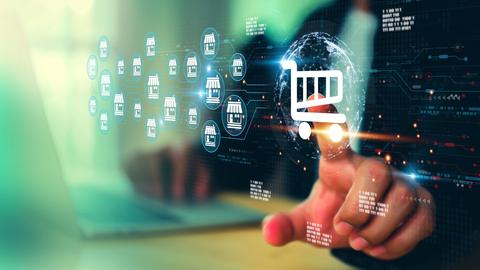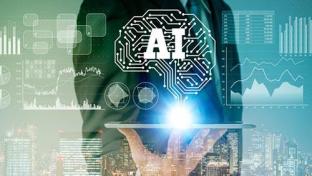Secure retail for strong experiences
As consumers develop their Christmas wish lists, retailers are busy compiling lists of their own.
At the top of the page for most is finding ways to reduce retail crime, the financial impact of which has ballooned over $110 billion each year, according to NRF data. However, this uptick in impact is not a result of a lack of action on the part of retailers.
Despite the ongoing challenge crime poses to the industry, retail’s embrace of emerging technology has driven significant progress in the fight against organized retail crime (ORC). Many retailers have invested significant resources in tools—like radio frequency identification (RFID), computer vision, smart exits, and more—that support holistic loss prevention strategies by using artificial intelligence (AI) to offer insight into operations.
But that’s not the only benefit retailers are seeing from these investments.
The power of personalization
Without consumers, there are no stores. Today’s consumers are used to personalized, tailored, and streamlined experiences everywhere they go. Retailers may want to pay attention to shoppers' changing expectations at the checkout so they can design experiences that meet them.
Using source data from individual store locations and advanced AI algorithms can help enhance customer experiences which allows retailers to cultivate and maintain a loyal base. Data from connected loss prevention systems can help retailers do it by providing insight that promotes:
Effective and strategic planning
With computer vision technologies, merchandising teams can see how long shoppers browsed, the displays that caught their eyes, and what they purchased in-store (as well as what they didn’t). Shopper behavior insights from these systems can also show how visitors react to various items and departments to help retailers design floor layouts that align with shopper preferences. This informs adjustments that not only help streamline journeys but facilitate more sales.
RFID systems that track stolen merchandise can also give an item-level and to-the-minute view of their inventory. That helps retailers refine merchandising, ordering, and replenishment to stay ahead of out-of-stocks and redundancies so inventory matches demand.
More efficient omnichannel programs
Holiday shopping tends to bring customers into stores in droves. Still, alternative fulfillment options remain popular and delivering convenient experiences can be of great benefit to retailers. Loss prevention tools can help retailers fine-tune BOPIS and curbside pickup processes so customers have positive experiences from start to finish, no matter how they choose to make their purchases.
Not only do the item-level inventory capabilities mentioned above help retailers ensure orders are ready and waiting when customers arrive, but parking lot monitoring systems can help retailers keep an eye on wait times and lines and adjust staffing to accommodate high-volume pickup times.
Also of use are shopper demographic and behavior tools, which can help retailers develop promotions for customers using BOPIS or curbside pickup. This can drive additional sales and foster loyalty while customer utilization data further informs shopper profiles for future plans.
Frictionless journeys
Many retailers are looking to next-generation self-checkouts to curb shrink, as self-service options can be significant drivers of shrink. These reimagined checkout options often include additional loss prevention measures—like mobile tag deactivation—so shoppers can truly check themselves out, no matter what they buy. This gives shoppers who prefer to use self-service options the chance to do so and retailers that piece of mind that high-risk items are protected.
The traffic mapping and shopper journey insights retailers use to identify effective loss prevention deployments can also help retailers refine their staffing and labor models. By tracking idle associates and customers, retailers can better understand where workers are making the most impact to ensure associates are always on hand to address customers’ needs.
Happy holidays—and a happier new year
AI is set to have a $9.2 trillion impact on the retail sector by 2029. It’s expected to revolutionize the landscape by improving loss prevention tactics and operations, but it also has the power to transform shopper experiences.
The insights advanced monitoring and analytics systems provide are also helping leaders uplevel experiences ahead of the holiday season—so long as they know how to use them. To deliver even more holiday cheer this year, retailers can use their AI-enabled suites to give shoppers the gift of personalized experiences and give themselves the gift of holistic loss prevention.







